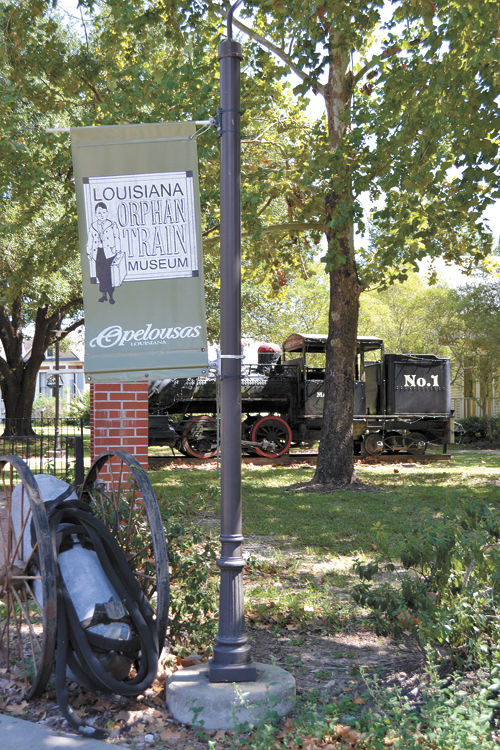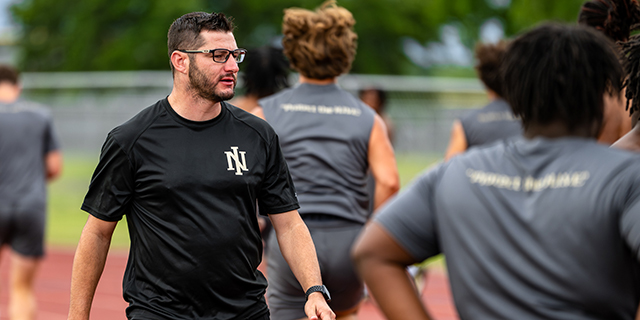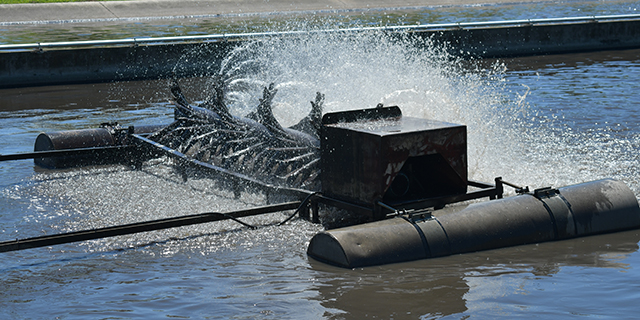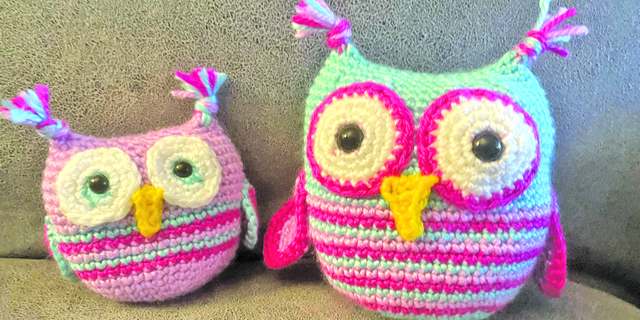Louisiana Orphan Trains
Published 9:35 am Tuesday, November 10, 2015

- Louisiana Orphan Trains
Story and Photos by Shanna Perkins
There are parts of history that remain covered in dust, shoved in dark corners in hopes that nobody ever ask too many questions. This is often the case when a degree of shame is attached to the incident, but these events are no less a part of the dynamic and rich history of the United States. This mindset is why many Acadiana natives have never imagined the possibility that in 1907 their ancestors may have been picked up as homeless children in New York and put on a train bound for rural Louisiana. Who were the children who stepped off of train platforms and into new lived in Acadiana – who were the riders of the Orphan Trains?
br
br
The Orphan Trains
br
“It all started in 1853,” explains Harold Dupre president of the board of the Louisiana Orphan Train Museum, 223 South Academy Street, Opelousas. “They would send children out west, so to speak. The children were from The Children’s Aid Society and The New York Foundling Hospital. The children’s mothers had come from Europe and they had to work to survive. It was very difficult for them to care for a child. So, they were left alone.”
br
The origins of the Orphan Trains trace back to 1869 when New York Socialite Catherine Fitzgibbon contracted cholera. While she was in a coma, she had visions of children. She promised that if she survived she would spend the rest of her life devoted to serving God. She recovered and joined the Sisters of Charity order, becoming Sister Mary Irene Fitzgibbons. Backed by only $5 and her promise to God, she opened the first orphanage in the Greenwich Village – The New York Foundling Hospital.
br
With the realization that the homeless children population in New York was more than they could handle, between 1854 and 1929, The Children’s Aid Society and The New York Foundling Hospital started collecting resources to help the ever-increasing 250,000 homeless or abandoned children of New York City. Both organizations believed that the best option for these children was to place them on trains for rural America. This became the building blocks for the modern day foster care system. The Orphan Trains brought more than 2,000 children to Louisiana.
br
“They came from Grand Central Station in New York and they’d go to New Orleans, Morgan City, Lafayette, Opelousas and Mansura,” explains Dupre whose father, George, was one of the Orphan Train Riders. “There were three trains that came through Opelousas in 1907. Father John Engberink was responsible for bringing over those first children from the New York Foundling Hospital. He would go to the outlying churches and he’d put in a request for families to take a child or two and they’d respond.”
br
Dupre explains that the New York Foundling Hospital and The Children’s Aid Society operated very differently. The New York Foundling Hospital would send an agent down each year to check on the children until they were 14 years old. If they discovered that one of the children was being mistreated, they would take them back.
br
“The difference was, the Children’s Aid Society would place an ad in the paper saying they were going to be in your city and they would have children lined up for you,” Dupre says as his wife, Athalie Dupre, chimes in, “Come and get them. Like they were selling hogs.” “Choose the one you want,” Harold continues. “Nobody ever came to check on them.”
br
br
Riders Of The “Baby Trains”
br
The ages of the children on the trains ranged from 3-6 years old. Though records indicate that there was at least one 2-year-old child and one 6-month-old child. On each train there were two nuns, two aids and an agent from the hospital. Many of the children were sent by special order. Meaning families would request the gender and appearance of the child they wanted. Most families in Louisiana requested children with black hair and brown eyes, so that they would have the traits common associated with the French ancestry common to the region. Each child wore a tag with an identification number. The prospective parents held the corresponding number to their assigned child.
br
One of the requirements from The New York Foundling Hospital was that each child must be raised in the Catholic faith. Looking around the Louisiana Orphan Train Museum at the images of the train riders, you see names like Joseph Wolfe Fontenot and Ernest Kaplan Leleaux. The large population of Jewish immigrants in New York resulted in an intermingling of distinctively Jewish names with distinctively French Catholic names – in true melting pot form.
br
Most of the children were indentured and never adopted. And though the circumstances seem bleak, these children rode the rails in search of a home and of people who would care for them when their parents failed to. What the adoptive parents were looking for in the children often varied from love to labor
br
“They were often used for child labor, cotton picking,” Harold explains. “Some people wanted a child so that they could have someone to take care of them as they got older, but for the most part it was child labor. Generally, they led good lives once they arrived. They were adopted by farmers, doctors, you name it. A lot of them stayed once they reached the age of maturity. But if they chose to leave, they were promised a suit, a suitcase and five dollars.”
br
br
George And Agnes
br
All of the volunteers at the Louisiana Orphan Train Museum are either direct descendants or closely connected to riders of the orphan train. For Harold, it’s his father George. George, who stood out in South Louisiana due to his Irish heritage, red hair and bright blue eyes, arrived with his sister, Agnes. At the time of their arrival George was 3 years old and Agnes was 6 years old.
br
“My father and his sister were the only siblings that we know of who came together,” Harold says while looking at a black and white portrait of his father. “When they left New York, the nuns told Agnes, ‘you hold his hand.’ Later, Agnes told us that she never once let go of his hand. Once an older lady who had witnessed the arrival was being interviewed about the experience and she said, ‘I remember so well a little boy and a little girl sitting on the curve holding hands. Their names were George and Agnes.’”
br
The family that intended to take George and Agnes requested a brother and sister. Unfortunately, two Georges arrived on that particular train. As luck would have it, the wrong George went with the wrong family. At the time, the predominant Language in South Louisiana was French making it impossible for the children to tell the adults about the mix up. Eventually, an agent from New York came to Opelousas to tell the families about the mix up.
br
“Agnes said, ‘I’ve been trying to tell them that,’” Athalie laughs. “By that time, the mothers were attached and any mother can understand that. An exchange never took place.”
br
For the majority of their lives George and Agnes lived near one another, but maintained no relationship. However, they always managed to keep track of each
br
Other. In 1969, Harold discovered how close the siblings lived to one another and decided that a reunion was in order. He recalls that the pair sat down and the dialogue began, “Well, George.” “Well, Agnes.” And so the conversation continued for hours without hesitation for hours.
br
“Agnes came to George’s funeral,” Athalie recalls. “She was very ill and we told her to go home, but she stayed until the funeral home closed.”
br
br
Secret Past
br
Across the board, the orphans never spoke about their pasts. They would say that they were from wherever the families who adopted them up lived and that those were their parents. There was never any mention of New York or trains. Harold hypothesizes that lingering stigmas were to blame for much of their secrecy.
br
“If you were an orphan, you didn’t know who your father was and it was assumed you were illegitimate; and some of them were,” he states. “In addition to that, you were from New York, you were a little Yankee. It was 1907 – these people had lived through the Civil War and that stigma was still very much there.
br
It wasn’t just the orphans who hid their pasts. Hospital records were also hard to come by. In fact, it was only 25 years ago that any information about the orphans could be retrieved from The New York Foundling Hospital. All request were met with the excuse that the records had burned or that the nun in charge of those records had passed away. Eventually, it became a legal matter and law officials stepped in. As Athalie says the nun in charge of the records suddenly “pulled the Lazarus act.” Today, request for records can be placed as long as there’s proof that the orphan has passed away.
br
“They didn’t want to talk about it and that was universal,” Harold expresses. “I served as the national president of the Orphan Train Heritage Society for four years and I traveled to about 13 different states. There were still a lot of orphans living at the time and none of them wanted to talk about it.”
br
In an effort to learn more about the orphans’ pasts and for them to learn more about each other, The Orphan Train Heritage Society began hosting meetings in order to accurately connect the historical dots. The first meeting in Lafayette was nearly 20 years ago. The level of secrecy was so deep that at these meeting friends and neighbors were learning for the first time that they were both Orphan Train riders.
br
“When we started having the meetings, there were still quite a few of them living,” Harold explains. “We, the descendants, kind of forced them to come out and speak. We had about seven or eight people at the first meeting.”
br
Louisiana’s last known living Orphan Train Rider in Louisiana, Alice Kearns Geoffory Bernard, died Jan. 17, 2015 at the age of 98 in Lafayette. Harold recalls how hesitant Alice was to open up about her past and attend meetings. But once she began sharing her story, she couldn’t be stopped. Through these experiences, she learned the importance of speaking out about her unique story and became, and remains, an Orphan Train celebrity.
br
br
Their Stories
br
The orphans’ lives varied greatly. Many lived modest lives while others rose to fame. Their stories unfold at the Louisiana Orphan Train Museum. The walls are lined with black and white images of babies, children and adults. As Harold walks around the museum, he points them out and tells their stories as if they were dear friends. He stops at a picture of Louisiana Tech University’s Joe Aillet Stadium.
br
“This is Mr. Joe Aillet,” he says smiling. “He was one of the orphans. He was the head football coach at Louisiana Tech University from 1940-1966. He was inducted into the College Football Hall of Fame in 1989. He coached Terry Bradshaw and Phil Robertson.”
br
Along the museum walls are glass cases full of baby dolls, clothing, pocketknives and rosary beads. Cased in glass are gauzy thin children’s clothing, well-worn petite coats and petticoats, lone leather shoes and bonnets. They quality of the handcrafted clothing is undeniable. “They were well dressed. All of them,” Harold says pointing to a little girl’s pink coat hanging high on the wall. There isn’t a single image or an artifact that doesn’t have a story attached to it. The tales are so fascinating and intriguing that it’s difficult to comprehend why they aren’t spoken of more frequently.
br
br
The Louisiana Orphan Train Museum
br
Like so many other things in Louisiana, the building plans for the museum were put on hold after Hurricanes Rita and Katrina. It’s official opening was in 2009. The museum is housed in an old freight train station in Opelousas’ historic Le Vieux Villagé. One of the many extraordinary features of the museum is a vivid 7X14 mural painted by artist Robert Dafford depicting the first arrival of the Orphan Trains. The museum in Opelousas is one of only two Orphan Train Museums in existence, the other being in Concordia, Kans.
br
The Louisiana Orphan Train Society maintains their ongoing mission to seek the records of Louisiana Orphan Train riders. Slowly peeling back the mystery and the secrecy surrounding the orphans is the only way to learn who they were and to shed light on one of the lesser-known aspects of Louisiana’s dynamic history and rich culture.
br
“I don’t think the United States was very proud of what it did there,” Harold says almost remorsefully. “But it was probably the best thing they could do at the time. It got the children off of the streets of New York. And this is a part of our history. These orphans who came here, they have descendants.”





